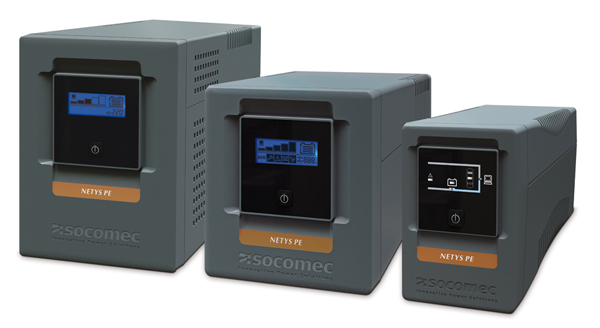What is a UPS?
Power protection is essential for modern business, this can be achieved by installing a UPS to ensure building facilities and IT equipment remain online during mains power failure. But what is a UPS and how does it work?
UPS is an abbreviation of ‘uninterruptible power supply’ and is exactly that, a device that provides uninterrupted power in the event of mains failure. Equipment such as computers, servers and a range of IT infrastructure apparatus can be affected by power quality and failure, if a server is not properly shut down without warning then this can result in the loss of valuable data. If a business operates tills or similar equipment then a mains power fault without a UPS in place will result in an immediate shutdown of equipment needed to complete transactions and provide essential customer support.
It is not just business that rely on a back up power source such as a UPS, many public services such as hospitals, airports and train services all have UPS in place to provide clean reliable power even when mains power is not present.
UPS come in a huge range of sizes, with rating descriptions as follows:
VA (volts ampere) small range UPS, often for single computers, tills or small office environments.
kVA (kilo volt ampere) mid range and the most common UPS rating description used in various environments such medium offices, supermarkets and such like.
MVA (mega volt ampere) large range UPS systems, often found in datacentres and other large power environments.

HOW IS THE POWER SUPPLIED?
The vast majority of UPS will be reliant on back up power from a connected battery source, the most common type of battery used in UPS is lead acid technology. Small UPS will utilise sealed lead acid batteries and larger UPS will most commonly use valve regulated lead acid batteries to provide power. The battery is often the heaviest and largest component of a UPS, and it is not unusual for the battery to account for more than 40% of the cost. For further information on battery types, please refer to our previous blog post A Guide to Large Rechargeable And Industrial Battery Types.
As a basic description, a UPS will be incorporated between the mains power and the building load, providing filtered power to any equipment connected to the UPS. The main components of a UPS are as follows –
Rectifier – The rectifier will convert the AC power (alternating current) from the mains to DC power (direct current), this is necessary for the batteries, which operate only on DC power.
Battery – In the event of a power outage the batteries will provide the power to the electrical load connected to the UPS. This may be computer equipment, servers, or any other item being protected by the UPS.
Inverter – The inverter will convert the DC power from the batteries back to AC power required by the buildings electrical load. The inverter will switch to the batteries in the event of a power outage by means of a static switch.
The UPS will also incorporate power filtering to ensure the power supplied is ‘clean’ and free of surges, lags, spikes and any number of power issues which can effect sensitive IT equipment.
It is worth noting that not all UPS rely solely on batteries for backup power, some larger UPS will use a flywheel system rather than batteries, these types of UPS are known as ‘rotary’ UPS.
DOESN’T A GENERATOR PROVIDE THE SAME FUNCTION?
In the event of a mains failure, a UPS will provide power in what is effectively ‘zero time’ meaning the electrical load being supported will continue to operate without interruption. A generator will take much longer to start up and generate enough power to take over the load, as a guide around 5 – 10 minutes is common though this can vary depending on the system implemented.
Often a generator and UPS system will be incorporated together to provide power protection. Once the mains supply has failed, the UPS will initially take over the load using battery as the power source, when the generator is ready to support the load the UPS will then switch over and use the power from the generator instead of the battery.
Power provided by the generator will continue to run via the UPS as this will ensure a clean, filtered power supply as generator power can be unclean by comparison and not suitable for IT loads.
HOW LONG DOES A UPS PROVIDE POWER FOR?
The UPS battery run time or ‘autonomy’ will depend on the battery installed, this can range from 5 minutes, enough time to start a generator or shutdown IT equipment safely, or several hours. Obviously the longer the autonomy required the larger the battery will need to be. Large installations can include numerous cabinets or racks dedicated to UPS batteries and will weigh many tonnes though small UPS may be no larger than a shoebox. A UPS supplier will tailor the battery design to suit client requirements.
CONTACTING BLUE BOX BATTERIES
Blue Box Batteries are specialists in providing battery systems for UPS ranging from small single phase units for home or small office use, to large systems protecting data centres, public services and large power environments.
For the best advice and assistance call us on 02381 789197.
Latest Headlines
Bulk Orders
Discounted prices are available for bulk orders, please contact us to discuss your requirement.